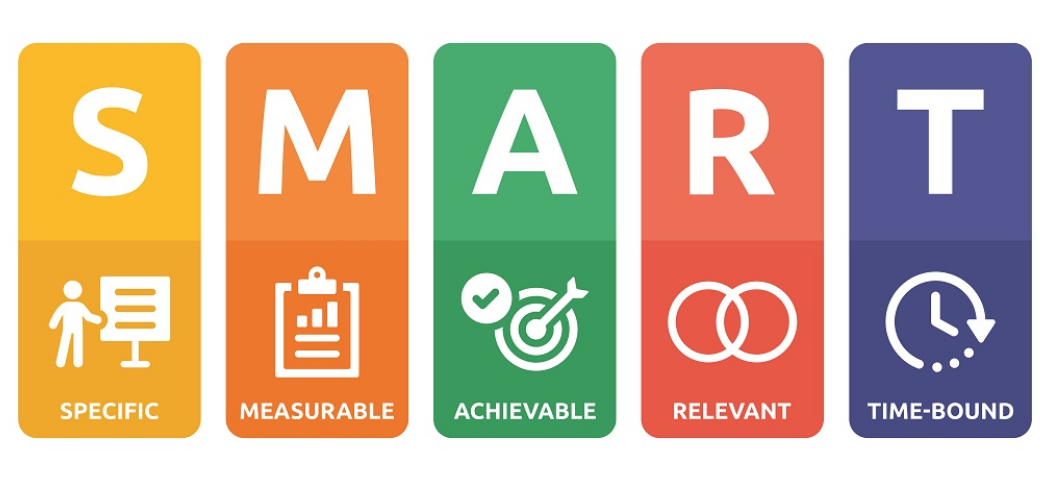5 Essential Steps for New Executives: A Guide to Strategic Company Transformation

In the wake of the COVID-19 pandemic and ongoing geopolitical instability, the economy is navigating through uncertain times. CEOs are striving to find the right balance amidst the evolving business landscape. They face challenges such as addressing colleagues’ mental health issues, managing hybrid remote work environments, and supporting both in-office and remote employees. Additionally, the introduction of AI is providing unprecedented data at record speeds, enabling the creation of professional content. Companies that will succeed will need to embrace strategic company transformation. We are in a unique era where processes are shifting rapidly, making it essential for businesses to embrace and adapt to sustain themselves. Business owners and leaders have to wear many hats when operating a company, consider hiring a local digital marketing agency who can strategize, and help you organize a transformation process to ensure companies success, with your sales process.
Leading strategic company transformation within a company comes with its own set of challenges, including managing employee resistance to change, ensuring leadership alignment, maintaining enthusiasm to drive transformation efforts forward, balancing short-term and long-term goals, clear communication, and effective resource utilization.
Unfortunately, a lot of transformation programs end up failing. They start with big proclamations and announcements of change, but fail to deliver. There are no clear tangible steps, ambiguous or unclear communication or direction from leadership, with limited vision. It takes more than extensive training, changing work processes, and restructuring departments. Here we are going to explore 5 essential steps for new executives to guide strategic company transformation.
Leading strategic company transformation within a company comes with its own set of challenges, including managing employee resistance to change, ensuring leadership alignment, maintaining enthusiasm to drive transformation efforts forward, balancing short-term and long-term goals, clear communication, and effective resource utilization.
Unfortunately, a lot of transformation programs end up failing. They start with big proclamations and announcements of change, but fail to deliver. There are no clear tangible steps, ambiguous or unclear communication or direction from leadership, with limited vision. It takes more than extensive training, changing work processes, and restructuring departments. Here we are going to explore 5 essential steps for new executives to guide strategic company transformation.
Need help reforming your strategy for company transformation?

1. Establish a Shared Vision

Crafting a Vision that Inspires and Drives Success Source: Flow trace Collaboration Diagnostics
We talked earlier about the big announcement of change that is needed for your organization. This is where strong communication and tangible goals are set. People need to be on the same page in your organization, of what this vision is, and it needs to be accepted for it to be a success. Include employees, in the creation of the vision, so that it is best understood, when it is time to implement some of the tasks. When the vision is unified across the company it provides direction for the entire organization. It aligns everyone’s efforts towards common goals, reducing confusion and conflict.
When presenting your vision to the team, ensure you are well-prepared in advance. Distribute the plan or any related documents ahead of time, allowing your team to review and reflect on the process. This gives them the opportunity to come up with ideas and questions, making the meeting more productive. Effective communication is crucial; without dialogue, time to process information, or the chance to generate ideas, your meetings will likely be unproductive.
A clear vision serves as a foundation for improved decision-making, guiding leaders and employees to make choices that align with the organization’s goals. Vision alignment fosters team building and enhances collaboration, instilling a sense of value in employees at all levels, which drives better results. Additionally, a shared vision and purpose provide organizational stability, helping to build resilience and navigate the inevitable challenges that arise during the transformation process.
When presenting your vision to the team, ensure you are well-prepared in advance. Distribute the plan or any related documents ahead of time, allowing your team to review and reflect on the process. This gives them the opportunity to come up with ideas and questions, making the meeting more productive. Effective communication is crucial; without dialogue, time to process information, or the chance to generate ideas, your meetings will likely be unproductive.
A clear vision serves as a foundation for improved decision-making, guiding leaders and employees to make choices that align with the organization’s goals. Vision alignment fosters team building and enhances collaboration, instilling a sense of value in employees at all levels, which drives better results. Additionally, a shared vision and purpose provide organizational stability, helping to build resilience and navigate the inevitable challenges that arise during the transformation process.
2. Clarify Strategic Direction

Designing a Roadmap to Achieve Your Business Goals Source:Cascade
Once the vision is established, offer clear instructions on how to achieve it. This involves setting specific, actionable goals and ensuring everyone understands their role in the process. If someone has an idea but is unsure how to implement it, provide examples and demonstrate how it can be done using the necessary tools and applications. Before assigning tasks, ensure there are demonstrations and examples to illustrate the process. This is especially important for newer employees, as it helps them understand the options available to achieve their tasks’ desired outcomes.
Proper feedback is also crucial when providing direction. Simply stating that a task or project is being done incorrectly or labeling it as good or bad is not only demoralizing but also unconstructive. Embracing constructive feedback is crucial for professional growth. It offers a clear path to better performance, personal development, and career advancement. Effective leadership and feedback illuminate and demonstrate the path to improvement. Provide examples of how tasks should be done, aligning them with the company’s vision, and offer materials and resources to support this. You can’t expect someone to reach the top without giving them a ladder. Ensure the feedback and guidance align with the vision and goals, to help reinforce the importance of the work, of your new executives, and how it effects the company.
As this relates to marketing providing customer audits of their experience, is an excellent way to improve sales processes, and add to the data that will help bring the vision of the company to life. Investing time in surveys, secret shoppers, and using AI generative tools to gather data, are just some of the ways to gather the valuable feedback, to market your company better. Consider partnering with a local SEO company that can assist you in developing a strategic plan to transform your business into a successful industry leader
Proper feedback is also crucial when providing direction. Simply stating that a task or project is being done incorrectly or labeling it as good or bad is not only demoralizing but also unconstructive. Embracing constructive feedback is crucial for professional growth. It offers a clear path to better performance, personal development, and career advancement. Effective leadership and feedback illuminate and demonstrate the path to improvement. Provide examples of how tasks should be done, aligning them with the company’s vision, and offer materials and resources to support this. You can’t expect someone to reach the top without giving them a ladder. Ensure the feedback and guidance align with the vision and goals, to help reinforce the importance of the work, of your new executives, and how it effects the company.
As this relates to marketing providing customer audits of their experience, is an excellent way to improve sales processes, and add to the data that will help bring the vision of the company to life. Investing time in surveys, secret shoppers, and using AI generative tools to gather data, are just some of the ways to gather the valuable feedback, to market your company better. Consider partnering with a local SEO company that can assist you in developing a strategic plan to transform your business into a successful industry leader
3. Invest in Professional Development

Invest in your future
It is important for a business to remain competitive and in constant adaptation to what is changing. This requires continual learning and improvement of skills and processes. Professional development programs can help employees acquire the necessary skills to adapt to new roles, technologies, or processes. This is necessary to a successful transformation process in a company. Another benefit is it boosts morale and confidence amongst your team to embrace new challenges, when learning new processes, when they have the skills, and tools to successfully completing tasks. Engaging professional development programs by offering diverse learning opportunities, leveraging technology, and providing continuous support and feedback focusing on improving engagement in professional development programs can help workforces acquire skills more effectively, and make better contributions towards organizational growth.
Good employees are more likely to stay if they feel there is time and space to improve and enhance their skills, which will give you desired outcomes, for your company. It sparks innovation, leaving room for creativity which will help when new approaches to processes are needed during times of transition.
Here are a few ways to implement professional development in the workplace.
By incorporating professional development and continuous learning into your strategy during the transformation process, your team will develop robust skills that will significantly contribute to the company’s overall success.
Good employees are more likely to stay if they feel there is time and space to improve and enhance their skills, which will give you desired outcomes, for your company. It sparks innovation, leaving room for creativity which will help when new approaches to processes are needed during times of transition.
Here are a few ways to implement professional development in the workplace.
- Assess Needs: Start by assessing the skills and knowledge gaps within your organization. Conduct surveys, interviews, and performance reviews to identify areas where employees need development.
- Set Clear Goals: Define the objectives of the professional development program. Ensure that these goals align with the organization’s overall strategy and the specific needs of employees.
- Create a Diverse Curriculum: Offer a variety of learning opportunities, including workshops, online courses, seminars, and hands-on training. This allows employees to choose the format that best suits their learning style.
- Leverage Technology: Utilize e-learning platforms and other digital tools to make training accessible and flexible. This is especially important for remote or geographically dispersed teams.
- Engage Experts: Bring in industry experts, trainers, and mentors to provide high-quality instruction and guidance. Their expertise can add significant value to the program.
By incorporating professional development and continuous learning into your strategy during the transformation process, your team will develop robust skills that will significantly contribute to the company’s overall success.
4.Transformation must remain continuous

Embrace change Source:Sweet Processhttps://www.sweetprocess.com/business-transformation/
It isn’t enough for companies to see problems, and take a one and done approach to solving problems. It is important for the team and it's partners to see that the company is committed to growth and improvement. This will instill confidence and loyalty in the group knowing the company has the ability to adapt to the ever-changing market.
Innovation leads to new ideas products, services, and processes that will help the company remain relevant to customers needs and interests. When a company is committed to growth and improvement, innovation naturally follows. One notable example of how transformation leads to innovation and success is Netflix. Originally a DVD rental service, Netflix underwent a significant transformation by embracing digital streaming technology. This shift allowed them to offer a vast library of content accessible on-demand, revolutionizing the entertainment industry. This is taking a simple idea, combined with the rapid technological advancements of the internet, and creating a huge success. It literally transformed a new way to watch television.
Another hallmark of a great company is its ability to work efficiently, which ultimately leads to customer satisfaction. By continuously leveraging strategic company transformation, the company stays attuned to market changes and remains relevant. Remember keeping this in mind as you work through this transition, will yield great results.
5.Achieve measurable Outcomes
When setting out measurable goals for the team, this helps bring the focus back to the vision the company is trying to bring forward. When demonstrating and achieving these goals it builds confidence in your stakeholders and those who are invested in your company, by seeing these results. Imagine you are a digital marketing company working on strategy and rebuilding a company’s website and online brand. Without setting achievable goals and providing data to demonstrate progress, clients are likely to walk away. Many businesses have complained about past experiences with marketing agencies, citing a lack of visible value or data to justify the efforts. If a digital marketing company doesn’t commit to delivering results and showing evidence of their work, it’s not worth considering a meeting with them.

S.M.A.R.T Goals help achieve results Source:Cultivate Advisors
Achieving measurable goals involves setting clear, specific, and attainable objectives that can be tracked and evaluated over time. Start by defining what success looks like and establishing key performance indicators (KPIs) to monitor progress. Break down larger goals into smaller, actionable steps, and assign deadlines to keep yourself accountable. Regularly review and analyze your progress, making adjustments as needed to stay on track. By maintaining focus and consistently measuring your efforts, you can ensure that you are moving towards your desired outcomes and achieving your goals effectively. Setting S.M.A.R.T. goals is just one example of breaking down the vision into actionable steps to progress. Let us take a look an this example.
Example SMART Goal
Goal: Increase website traffic by 20% in the next 6 months.
Specific: Increase website traffic to improve brand awareness and lead generation.
Measurable: Track website traffic using Google Analytics, aiming for a 20% increase.
Achievable: Implement SEO strategies, create high-quality content, and promote through social media.
Relevant: This goal aligns with our marketing objectives to boost online presence and generate more leads.
Time-bound: Achieve this goal within the next 6 months.
During your company’s transformation process, it can feel vulnerable, especially when partnering with an experienced digital marketing agency. Measurable goals provide accountability and enable the team to take ownership of their responsibilities. They also ensure that resources are allocated to initiatives with the most significant impact. Saving the company time and money. By setting achievable goals during strategic company transformation, you can ensure success and growth of the company.
Example SMART Goal
Goal: Increase website traffic by 20% in the next 6 months.
Specific: Increase website traffic to improve brand awareness and lead generation.
Measurable: Track website traffic using Google Analytics, aiming for a 20% increase.
Achievable: Implement SEO strategies, create high-quality content, and promote through social media.
Relevant: This goal aligns with our marketing objectives to boost online presence and generate more leads.
Time-bound: Achieve this goal within the next 6 months.
During your company’s transformation process, it can feel vulnerable, especially when partnering with an experienced digital marketing agency. Measurable goals provide accountability and enable the team to take ownership of their responsibilities. They also ensure that resources are allocated to initiatives with the most significant impact. Saving the company time and money. By setting achievable goals during strategic company transformation, you can ensure success and growth of the company.
6. Conclusion
In conclusion, strategic company transformation is a critical process for new executives to navigate successfully. It requires clear vision, measurable goals, and a commitment to continuous improvement. By fostering a culture of innovation, leveraging technology, and prioritizing professional development, executives can drive meaningful change and ensure the long-term success of their organization. Embracing transformation with a proactive and collaborative approach will not only enhance operational efficiency but also position the company to thrive in an ever-evolving business landscape.
Partnering with a local Digital Marketing agency who are experts in navigating the challenges with the digital landscape, can help transform your company brand for great success.
Partnering with a local Digital Marketing agency who are experts in navigating the challenges with the digital landscape, can help transform your company brand for great success.
Looking to Expand Your Market Reach?